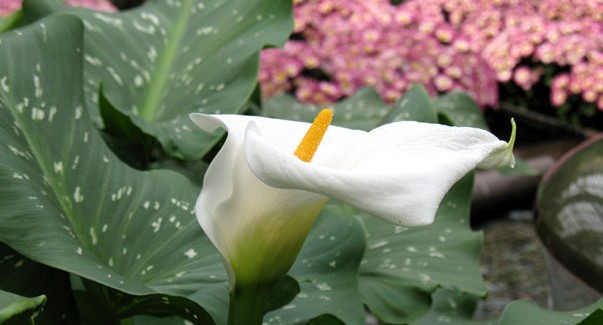Your cart is empty
Pets and Your Garden
 If you’re like me, pets are a part of your family and you go out of your way to make sure they are well cared for. In the garden, though, you have to be careful — some plants, fertilizers and pesticides commonly used in and around many homes can actually hurt our four-legged friends.
If you’re like me, pets are a part of your family and you go out of your way to make sure they are well cared for. In the garden, though, you have to be careful — some plants, fertilizers and pesticides commonly used in and around many homes can actually hurt our four-legged friends.
Always check with your nursery to make sure the fertilizers and pesticides you’re using are not poisonous, but don’t forget to check the toxicity of the plants you’re purchasing, as well. There are many, but I’ve listed the most common types of harmful plants found in the Southwest.
Amaryllis: The bulbs are poisonous.
Azalea: The leaves and the nectar from the flowers contain glycoside, a potentially powerful poison that strikes the heart of humans and animals. It can cause nausea, a burning sensation in the mouth and prickly feeling on the skin. Native Americans from Delaware once used this as a suicide potion.
Calla Lily: All parts of this plant are poisonous.
Dieffenbachia: This plant contains strychnine, which will burn the mouth and can paralyze vocal cords.
English Ivy: This plant’s leaves and berries are poisonous.
Iris: The iris’ underground stem is poisonous.
Lantana: All parts of lantana are poisonous, and the green berries are especially toxic.
Oleander: All parts of the oleander are extremely poisonous. If you burn the clippings, the plant will even release poisonous fumes.
Philodendron: Some varieties will cause skin rashes, but all varieties are poisonous.
Rubber plant: The rubber plant’s milky sap is poisonous.
Spathiphyllum (Peace Lily): The Peace Lily’s flowers, leaves and stem are poisonous.
To deter your pets from nibbling on a poisonous plant, apply a light layer of Tabasco sauce or cayenne pepper around the plants in question. Additionally, spread citrus peels or rose stem clippings around the plants you want your pet to avoid.
There are worries, other than how your pets interact with garden plants, that can come from your back yard. For instance, mosquitoes are a big concern right now. Some types can carry heartworm, encephalitis and the denge virus.
Sitting water from monsoon storms provides a great breeding ground for mosquitoes. Bacillus thuringiensis israelensis (Bti) is an organic way to prevent mosquito babies from being born. For more information, visit http://www.arbico.com/.
Additionally, when it comes to preventing fleas and ticks, the toxins in most products can cause more health problems than any little bug. The best thing is to go organic. To try the organic approach to warding off fleas and ticks, try the following plants and remedies:
- Plant artemisia and santolina.
- Shampoo your pet with shampoo that contains tea tree oil.
- Treat your pet to a citrus shampoo D-Limonene.
- Place eucalyptus or cedar bark in the garden or in your pet’s bed.
- Dust outside areas of concern with food-grade diatomaceous earth (food grade only). The dust slices flea and tick skin so they dehydrate and die. Inside, spread diatomaceous earth on your rugs, then vacuum.
Remember that organic and natural remedies will undoubtedly be the best way to handle problems with pests, weeds and soil.

